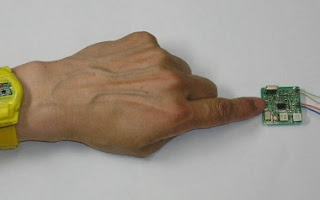London: A new data transmission system has been developed that could substantially improve the transmission capacity and energy efficiency of the world's optical communication networks. Transmission of data through optical networks is currently limited by ''phase noise'' from optical amplifiers and ''cross talk''
induced by interaction of the signal with the many other signals (each at a different wavelength) simultaneously circulating through the network.''Phase noise'' is the rapid, short-term, random fluctuations in the phase of a signal, which affects the quality of the information sent and results in data transmission errors. ''Cross talk'' refers to any signal unintentionally affecting another signal.
Now, researchers working on the EU-funded FP7 PHASORS project, led by the University of Southampton's Optoelectronics Research Centre (ORC), have announced a major advance in the potential elimination of this interference.
Scientists on the PHASORS project announced the development of the first practical phase sensitive amplifier and phase regenerator for high-speed binary phase encoded signals.
This device, unlike others developed in the past, eliminates the phase noise directly without the need for conversion to an electronic signal, which would inevitably slow the speeds achievable.
The device takes an incoming noisy data signal and restores its quality by reducing the build up of phase noise and also any amplitude noise at the same time.
"This result is an important first step towards the practical implementation of all-optical signal processing of phase encoded signals, which are now being exploited commercially due to their improved data carrying capacity relative to conventional amplitude coding schemes,” Nature quoted ORC Deputy Director and PHASORS Director, Professor David Richardson as saying.
"Our regenerator can clean noise from incoming data signals and should allow for systems of extended physical length and capacity. In order to achieve this result, a major goal of the PHASORS project, has required significant advances in both optical fibre and semiconductor laser technology across the consortium.
“We believe this device and associated component technology will have significant applications across a range of disciplines beyond telecommunications – including optical sensing, metrology, as well as many other basic test and measurement applications in science and engineering,” he added.
The study has been published in the journal Nature Photonics.
Source: (wateen.net)